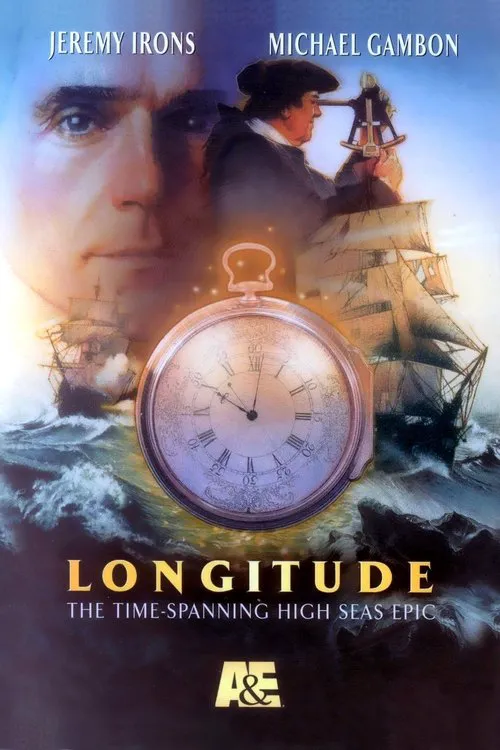Longitude

あらすじ
Longitude, a 2000 film directed by Peter Greenaway, tells the story of two timelines intertwined - the 18th century, where the brilliant clockmaker John Harrison navigates the perils of inventing the marine chronometer, and the 20th century, where a quirky enthusiast named Jeremy Irons' character, Rupert Gould, seeks to restore Harrison's masterpiece. In the 18th century, the English clockmaker John Harrison finds himself at the forefront of a crucial challenge facing mariners of his time. As sailors rely on the stars for navigation, but the position of celestial bodies is not always certain, the need for an accurate timekeeping device becomes increasingly essential. When the British Royal Navy announces a prize to develop a marine chronometer capable of determining longitude at sea, Harrison sees an opportunity to revolutionize navigation. Overcoming numerous setbacks and skepticism, Harrison tirelessly works on solving the problem, fueled by his ambition to create an innovative timepiece that will prove his genius. As Harrison grapples with the intricacies of marine chronometry, a rival, Thomas Davis, emerges as a potential adversary, whose attempts to build a similar navigation device threaten to undermine Harrison's efforts. In this fiercely competitive environment, the clockmaker must not only overcome scientific challenges but also face the animosity of his peers and the skepticism of the naval establishment. Meanwhile, in the 20th century, we meet Rupert Gould, a quiet, troubled character obsessed with repairing and preserving Harrison's chronometer. Gould's fixation on the device stems from a series of traumatic events from World War I, which have left him with physical and emotional scars. This tortured soul finds solace in the precise world of clockwork, where mechanical components function with calculated predictability. Gould's fixation on Harrison's creation is a way for him to cope with his chaotic past, seeking to impose order on the chaos that surrounds him. As Gould delves deeper into the mysteries of Harrison's chronometer, he becomes increasingly fascinated with the life and work of the clockmaker. Gould's research into Harrison's journals reveals the depth of the clockmaker's genius and his unwavering dedication to his craft, even in the face of overwhelming adversity. This parallel narrative serves as a vehicle to explore the intersection of historical events and personal lives, revealing the human dimensions behind the science and technology that shape our understanding of the world. The film interweaves the two narratives, juxtaposing Gould's modern-day struggles with Harrison's historical challenges. While Gould's world is marked by turmoil and uncertainty, Harrison navigates a more predictable environment, albeit one fraught with scientific obstacles and interpersonal conflicts. The film suggests a deep connection between these two characters, each of whom is driven by a shared desire for innovation and precision. In Harrison's story, the invention of the marine chronometer is depicted as a monumental achievement, one that brings together technical mastery, determination, and creative innovation. As Harrison toils to perfect his design, he overcomes seemingly insurmountable challenges, eventually developing a timepiece capable of accurately determining longitude at sea. Meanwhile, as Gould restores Harrison's chronometer, he uncovers a wealth of historical detail that reveals the scope and complexity of Harrison's work. This meticulous process, accompanied by Gould's introspection, provides a nuanced portrayal of the clockmaker's genius and his enduring legacy. The parallel narratives converge towards the end of the film, as Gould's restoration of Harrison's chronometer becomes a metaphor for the clockmaker's own creative journey. As Gould works tirelessly to repair and reassemble the clockwork components, we see echoes of Harrison's tireless efforts in the 18th century. The two timelines merge, with Gould's modern anxieties giving way to a deep sense of connection with Harrison's historical struggles. The conclusion of the film presents a poignant reflection on the timeless nature of human creativity and innovation. As Gould's restoration of Harrison's chronometer completes, he gazes intently at the marine chronometer, which, with its precise mechanisms, serves as a testament to the unyielding spirit of the clockmaker who created it.
レビュー
おすすめ




